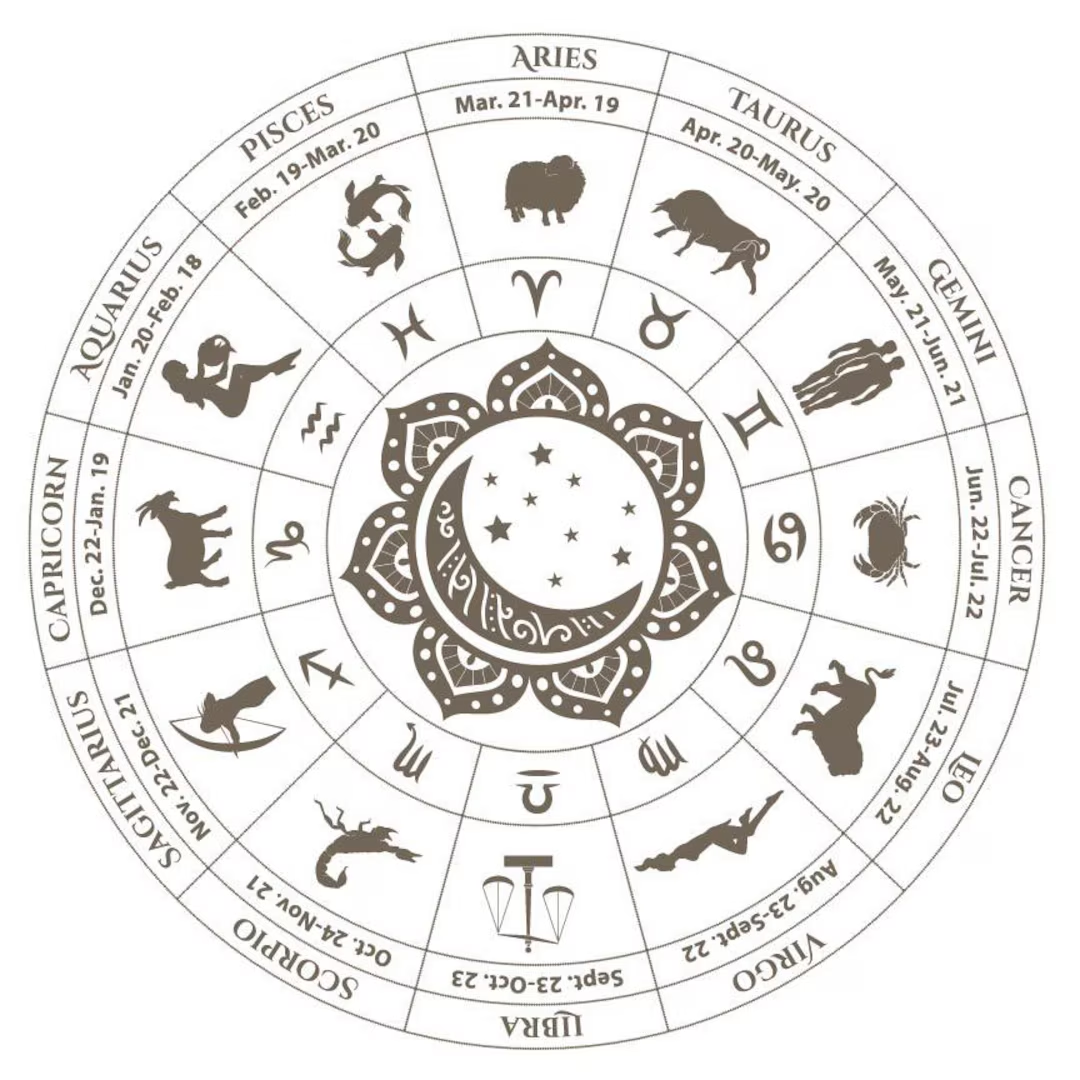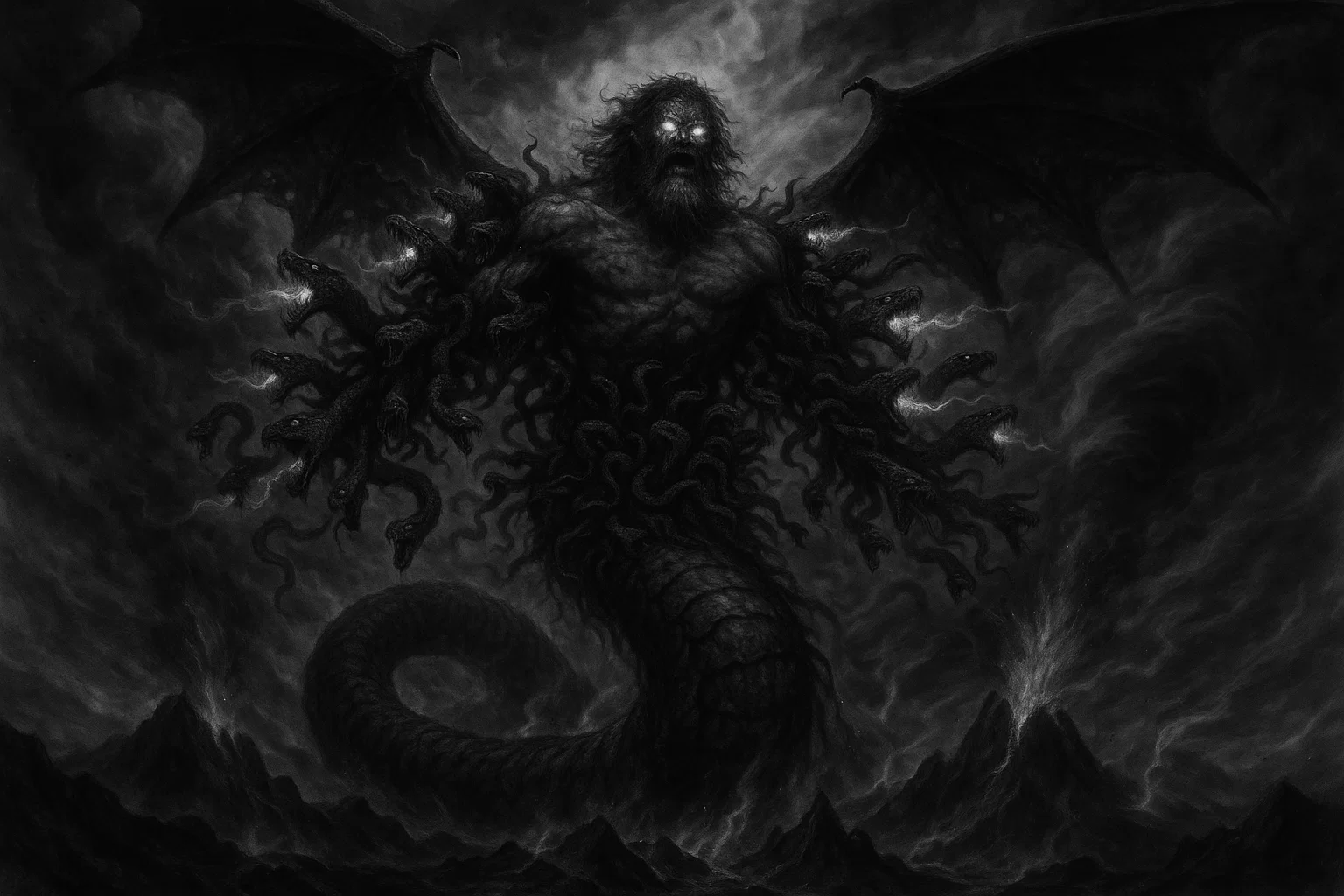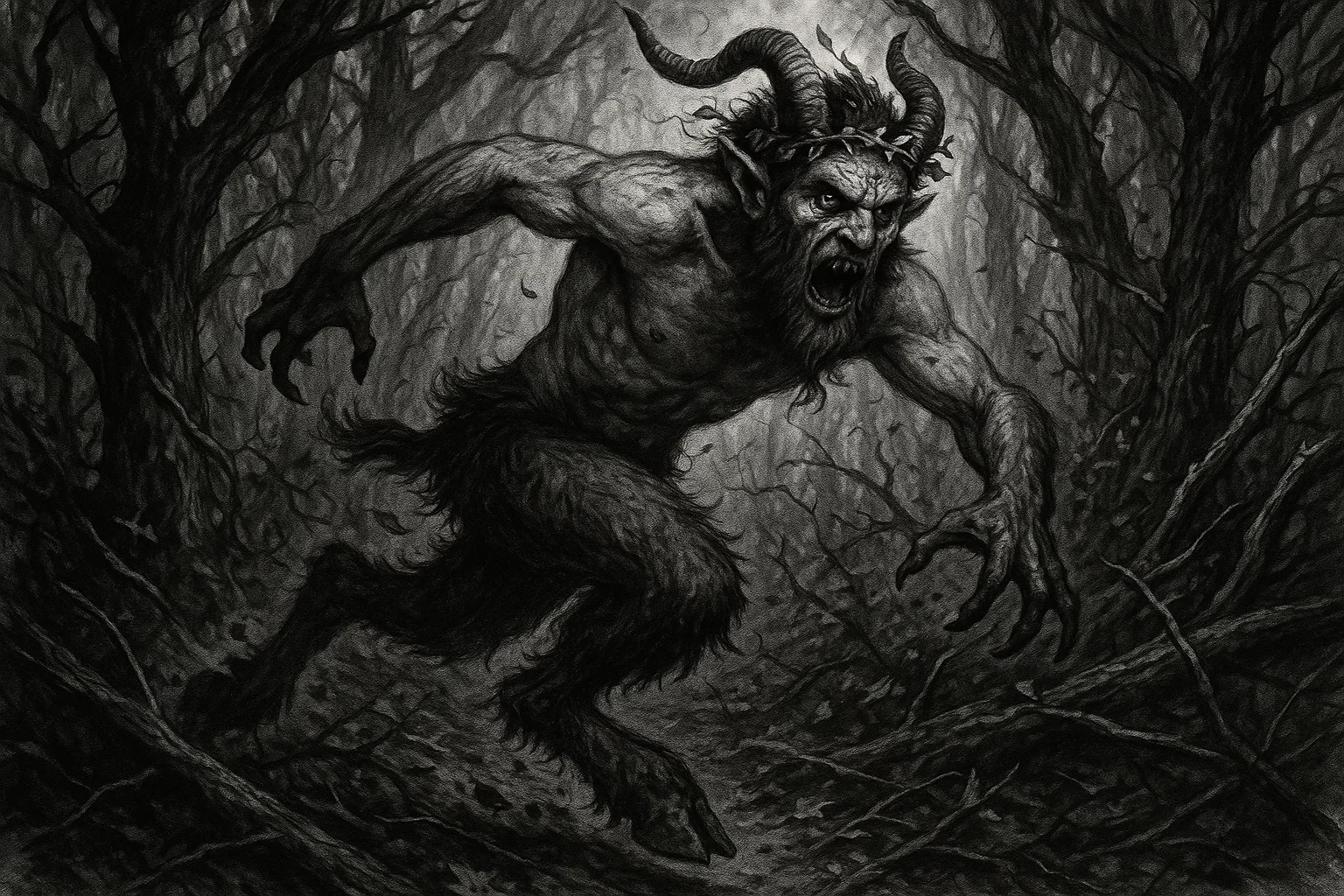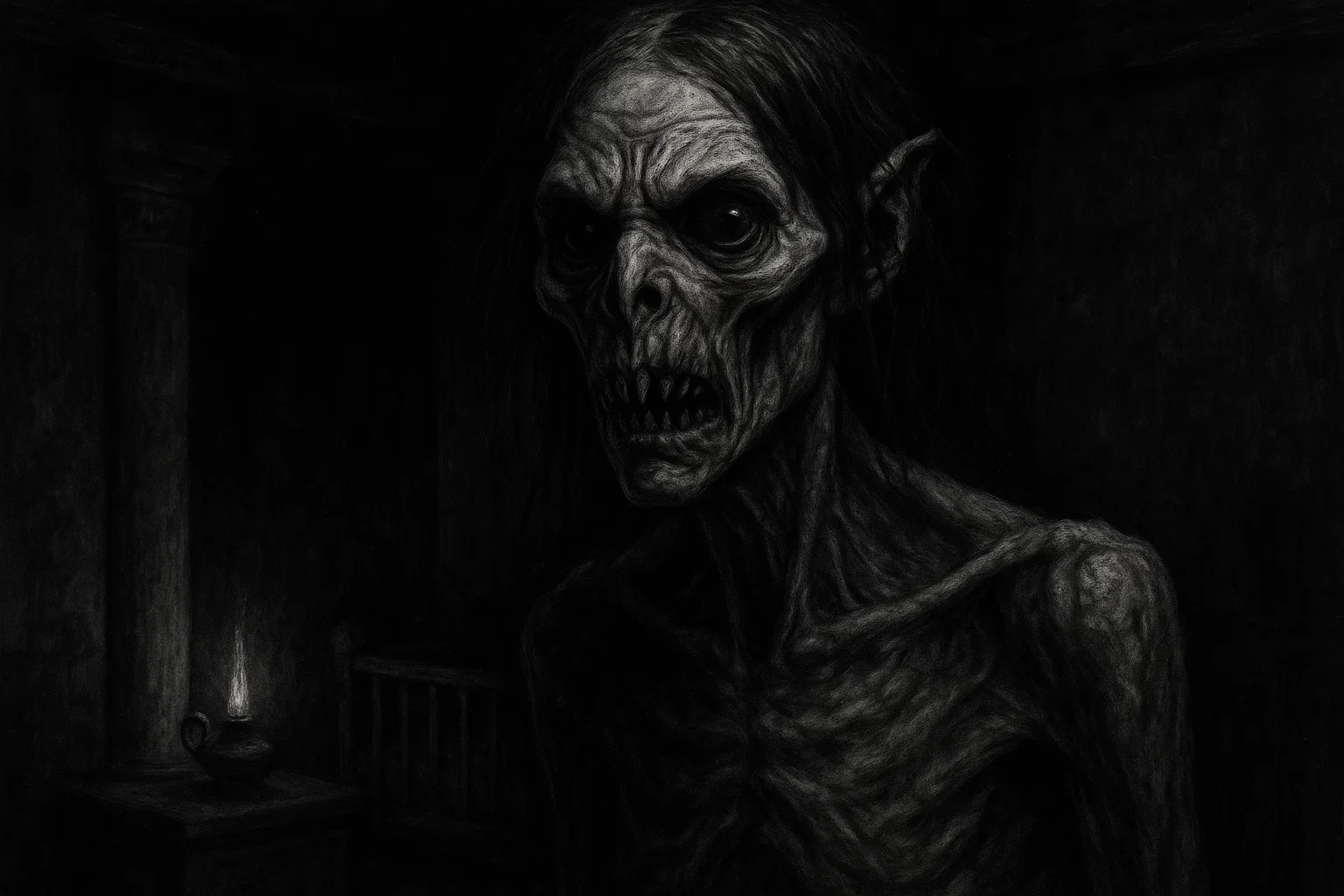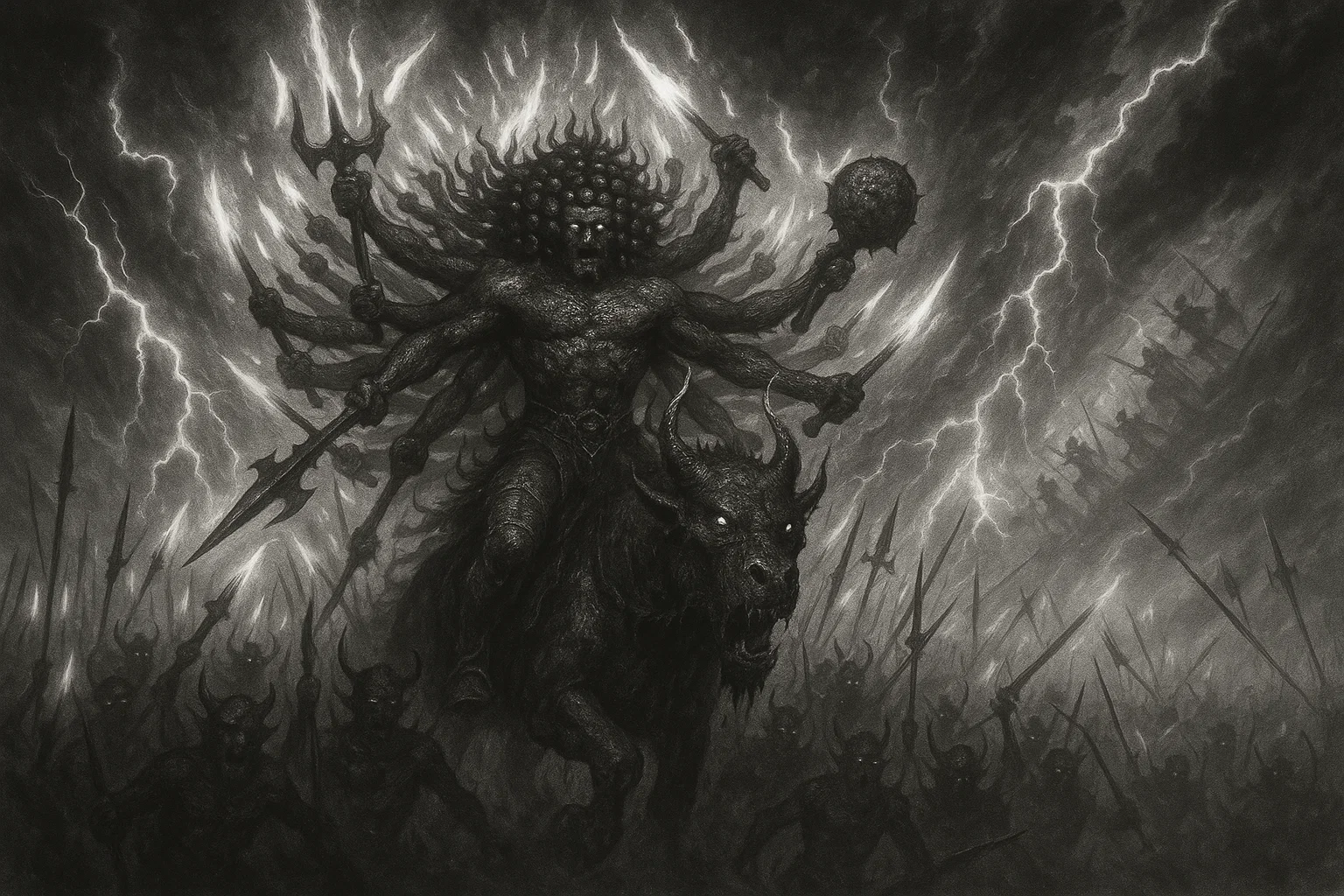The Popobawa is a malevolent cryptid (or evil spirit), often described as a winged, one-eyed creature, whose tales originate primarily from the island of Zanzibar, Tanzania.
Unlike many cryptids associated with remote wildernesses, the Popobawa is predominantly a creature of the night, known for targeting and terrorizing sleeping victims in their homes.
Its reputation is not simply that of a monster but a force associated with sexual assault and psychological terror, giving it a uniquely dark cultural significance in the region.
Summary
Overview
| Attribute | Details |
| Name | Popobawa |
| Aliases | Sheitani (Swahili for “devil” or “evil spirit”) |
| Threat Level | Aggressive, dangerous, and predatory, especially at night. |
| Habitat | Primarily the islands of Zanzibar (Unguja and Pemba), Tanzania; also reported on the mainland coast. |
| Physical Traits | Often described as a small, winged humanoid with one large eye, a bat-like appearance, or a changing, smoky form. Size estimates are highly variable due to its shapeshifting claims. |
| Reported Sightings | Pemba Island (major hub), Unguja (Zanzibar Island), Dar es Salaam (mainland Tanzania). |
| First Documented Sighting | The first major wave of modern sightings/attacks was recorded in 1970 on Pemba Island. |
| Species Classification | Unknown; generally regarded as a malevolent Jinn (or Sheitani) or an extraterrestrial entity in some folklore. |
| Type | Airborne and terrestrial; predominantly nocturnal. |
| Behavior & Traits | Nocturnal, shapeshifting (sometimes appearing as a person or shadow), malicious, and known for aggressive attacks on sleeping people; said to assault victims who don’t talk about their encounters. |
| Evidence | Eyewitness accounts, cultural folklore, and alleged mass hysteria. |
| Possible Explanations | Sleep paralysis, mass hysteria, misidentification of known animals (like fruit bats), or cultural manifestation of trauma. |
| Status | Actively reported in local folklore; considered an ongoing mystery with episodic spikes in activity. |
Who or What Is the Popobawa?
The Popobawa (pronounced poh-poh-BAH-wah) is a creature deeply entrenched in the urban legends and folklore of Tanzania, particularly within the Zanzibar Archipelago.
Its name in Swahili is often interpreted as “bat-wing,” a direct reference to one of its most frequently reported physical characteristics. More than just a simple monster, the Popobawa is often understood within a religious and spiritual framework.
In fact, many locals categorize it as a type of Jinn (or Sheitani), an evil spirit capable of malevolent actions, including shapeshifting and exerting psychological influence.
The creature’s notoriety originates from its alleged actions: it is said to attack sleeping victims, primarily men, by sexually assaulting them. Crucially, the Popobawa’s legend includes a coercive element: victims are reportedly instructed to tell others about the attack. Failure to share the story will result in a repeated, and often more severe, assault.
This unique aspect contributes to the sudden, periodic mass panics that grip the islands, as those who believe they have been attacked are driven to confess publicly.
Your Personalized, Hyper Accurate Moon & Astrology Reading
Limited time offer: Get your FREE, fully personalized Moon & Astrology Reading that takes astrology to a whole new level. Discover the secret depths of your personality, relationships, and true purpose in life.
What Does the Popobawa Look Like?
Descriptions of the Popobawa are notoriously inconsistent, a fact often attributed to its alleged shapeshifting abilities.
However, a composite of common accounts portrays a creature that is certainly monstrous and nightmarish. It is frequently described as a small, stocky humanoid with characteristics suggestive of a mammal or a bat, hence its name.
Key physical traits consistently mentioned include:
- Wings: The creature almost always possesses large, bat-like wings, which it uses to fly and to access homes, often entering through windows or walls.
- One Eye: Some reports highlight a single, large, glowing eye located on its head.
- Small Stature: It is generally not described as a giant, but rather as relatively small and powerful, suggesting it is agile and capable of maneuvering in confined spaces.
- Appearance of Smoke/Shadow: In many contemporary accounts, the Popobawa does not have a fixed physical form but appears as a shadowy or smoky figure, capable of instantly changing its shape to appear as a dog, a bird, or even a human being.
- Foul Odor: Accounts often describe a terrible sulfurous smell or a pervasive stink accompanying its presence.
You May Also Like: Ariton (Egin): The Demon Who Knows Your Past, Present, and Future
Habitat
The Popobawa is inextricably linked to the Zanzibar Archipelago in the Indian Ocean, off the coast of East Africa, primarily Pemba Island and, to a lesser extent, Unguja (Zanzibar Island). Its alleged habitat is not the deep forest or isolated wilderness, but rather the densely populated coastal areas and the homes of human settlements.
Pemba Island, the initial and most frequent site of outbreaks, is characterized by its lush, hilly terrain, fertile soil, and significant clove plantations. The settlements are often composed of simple houses or huts, which, in some interpretations, allow the entity easy access to sleeping occupants.
The creature is considered a domestic or urban cryptid that operates in the human environment under the cover of darkness. Reports suggest it prefers to attack victims while they are in bed—a highly intimate and terrifying setting.
The cryptid’s territory has expanded slightly over time, with reports also surfacing on the Tanzanian mainland in coastal cities like Dar es Salaam. Still, its cultural heart remains definitively in Zanzibar. Its presence is less tied to a physical landscape than to the collective fears and social dynamics of the local communities.
Popobawa Sightings
The Popobawa’s history is marked by distinct, episodic waves of mass sightings or attacks, primarily on Pemba Island, where fear spreads rapidly through the communities.
| Date | Place | Witness Details | Description | Reliability |
| 1970 | Pemba Island, Tanzania | Multiple villagers, mostly men. | The first major wave of attacks; victims reported sexual assaults by a shadowy, flying creature, with instructions to tell others. | High: multiple, consistent, independent local reports. |
| 1980s | Zanzibar, particularly Pemba | Sporadic accounts from various residents. | Fewer reports than the 1970s outbreak, but the legend solidified; often described as a winged Sheitani (demon). | Medium: folklore consolidation, fewer mass reports. |
| 1995 | Pemba Island and Unguja (Zanzibar City) | Widespread reports; many men sleeping outside their homes to avoid it. | A major, well-documented outbreak; reports of attacks and the Popobawa’s arrival being signaled by a strong smell of sulfur. | High: significant media coverage and societal impact. |
| 2001 | Dar es Salaam, Tanzania (Mainland) | Several residents in the mainland capital. | The fear spread to the Tanzanian mainland, suggesting the creature crossed the water or the fear had traveled. | Medium: geographic spread indicates cultural or media influence. |
| 2007 | Zanzibar Archipelago | Isolated reports from coastal communities. | A smaller, brief resurgence of panic; descriptions maintained the shapeshifting, nocturnal predator theme. | Low: isolated cases, likely driven by residual fear. |
Awaken XT is unlike anything you’ve ever tried before…
…it’s based off a closely guarded formula that’s said to be able to supercharge your pineal gland and help you access your untapped inner power. With it’s unique blend of extremely hard to source ingredients, Awaken XT helps support the healthy functioning of your pineal gland, as well as your other organs in your body.
The 1970 Pemba Outbreak
The first major wave of documented Popobawa panic occurred on Pemba Island in 1970. Before this, the creature was likely a localized element of folklore, but in 1970, reports of nocturnal assaults suddenly surged, becoming a shared communal experience.
Local lore recounts that the creature was summoned or released by an aggrieved sheik from his tomb, possibly as an act of revenge. This outbreak was foundational in establishing the Popobawa’s unique behavioral trait: the demand that the victim must tell others about the assault.
This requirement is arguably the engine of the mass panics, as terrified victims—believing that silence will lead to another, worse attack—spread the story, thus propagating the fear exponentially through the close-knit island communities. The panic reportedly only subsided after locals began sleeping in groups and keeping vigil.
You May Also Like: What Is the Holawaka? The Ethiopian Spirit Bird That Doomed Humanity
The Major 1995 Event (Zanzibar City)
The 1995 outbreak is perhaps the best-known and most heavily documented, receiving international media attention. The panic started on Pemba Island and quickly spread to Zanzibar City on Unguja.
During this time, the creature’s alleged modus operandi was well-established: nocturnal invasion of homes to sexually assault sleeping occupants. The fear was so intense that many residents, desperate to protect themselves, abandoned their bedrooms to sleep outside in groups, by a fire, or on the roofs of their houses, believing the Popobawa would only attack a lone sleeper inside a home.
This widespread behavioral response—a collective cultural ritual to ward off the creature—is a key indicator of the panic’s severity and the deep belief in the creature’s reality.
Evidence & Investigations
Tangible physical evidence for the Popobawa is non-existent. No physical remains, high-quality photographs, definitive footprints, or verifiable biological samples have ever been recovered. The case for its existence rests solely on eyewitness accounts and cultural folklore.
Cryptozoological investigations, such as those conducted by figures like Benjamin Radford, have focused less on a biological entity and more on the sociological and psychological dimensions of the phenomenon.
Researchers generally conclude that the waves of Popobawa sightings and attacks are textbook examples of a Mass Psychogenic Illness (MPI) or Mass Hysteria.
- Absence of Physical Proof: The creature’s alleged shapeshifting and preference for darkness make verification impossible. Victims describe a shadowy, ephemeral presence that leaves no traceable residue.
- Skepticism of Accounts: While the sincerity of the victims is rarely questioned, the descriptions are highly varied and often fantastical, changing with each reported wave. The core consistency is the nocturnal sexual assault and the subsequent requirement to disclose the event, which are easily explained through cultural transmission and psychological suggestion.
- Socio-Cultural Context: Investigations highlight that the outbreaks often coincided with periods of political upheaval or social stress in Zanzibar, such as before and after the 1995 general elections.12 Some analysts suggest the Popobawa serves as a cultural metaphor or scapegoat for real-world anxieties, including political intimidation and the discussion of repressed topics, like sexual violence, in a highly conservative society.
In summary, the Popobawa remains an unproven entity; all formal inquiries point toward a psychological and cultural phenomenon rather than a genuine biological cryptid.
You May Also Like: Is the Lukwata Real or Just an African Legend?
Theories
Explaining the Popobawa phenomenon requires moving beyond a simple “hoax” or “real” dichotomy to analyze the complex interplay of cultural beliefs, psychology, and social dynamics.
The Sleep Paralysis and Hallucinations Theory
One of the most compelling explanations for individual Popobawa encounters is sleep paralysis combined with hypnagogic/hypnopompic hallucinations. Sleep paralysis is a temporary inability to move or speak that occurs when a person is falling asleep or waking up.
During this state, individuals often experience intense pressure on the chest, a sense of a malignant presence in the room, and vivid, frightening hallucinations (hypnagogic/hypnopompic).
In the context of Zanzibari folklore, the universal, biologically driven experience of sleep paralysis is given a specific cultural meaning: it is the Popobawa sitting on the chest or attacking the victim.
The inability to move or speak, the dark presence, and the terror perfectly align with the core mechanics of the Popobawa attack narrative.
Mass Psychogenic Illness (MPI)
The periodic, epidemic-like waves of Popobawa panic strongly suggest a Mass Psychogenic Illness (MPI), also known as mass hysteria. MPI involves the rapid spread of symptoms (in this case, fear, anxiety, and the sense of having been attacked) among a large group of people without any organic or toxic cause.
In Zanzibar, a rumor or initial account of a Popobawa attack, particularly given the social mandate to tell others, can trigger a chain reaction. Individuals who hear the story become primed. If they then experience a nightmare, a bout of sleep paralysis, or simply wake up in a state of anxiety, they may interpret their experience through the lens of the circulating folklore.
The shared belief, exacerbated by high social stress (such as political tension), creates a feedback loop that validates and spreads the “attacks” throughout the community.
You May Also Like: What Is the Mazomba—Africa’s Lost Dinosaur or an Unknown Rhino?
Scapegoat for Social Anxiety
Some sociological theories propose that the Popobawa serves as a cultural outlet or scapegoat for difficult or taboo subjects in the local conservative environment.
The creature’s primary action—sexual assault—is a highly sensitive topic. The Popobawa, a non-human, spiritual entity, may offer a way to publicly acknowledge or discuss these dark experiences without the stigma, shame, or fear of reprisal that would accompany reporting a real, human attacker.
Furthermore, its appearance often coincides with political or social upheaval, suggesting it embodies communal anxiety and fear of the unknown or the powerful.
The Popobawa is, in this sense, a manifestation of the community’s collective stress, providing a recognizable, non-political figure to blame for general societal malaise.
Comparison with Other Similar Cryptids
The Popobawa’s combination of nocturnal, intimate attacks and its demon-like or spiritual nature makes it unique. Still, it shares characteristics with other cryptids and folklore figures.
| Cryptid Name | Origin | Similar Traits | Distinguishing Differences |
| Mothman | Point Pleasant, USA | Associated with fear and misfortune; often described as winged and shadowy. | Popobawa is an aggressor; Mothman is primarily an omen/harbinger of disaster. |
| Jersey Devil | New Jersey, USA | Associated with a specific geographic location; winged and sometimes described as having a horse’s head. | The Devil is a creature of the wilderness; Popobawa is domestic/urban and associated with nocturnal assault. |
| Chupacabra | Puerto Rico/Americas | Nocturnal, known for causing unexplained attacks. | Chupacabra attacks livestock (vampire-like); Popobawa attacks humans (sexual assault). |
| Incubus/Succubus | European Folklore | Attacks sleeping people; primarily focused on sexual activity. | Incubus/Succubus are often described as attractive human-like demons; Popobawa is typically grotesque/animalistic. |
| Demon/Sheitani | Global/Islamic Folklore | Spiritual being (Jinn) capable of shapeshifting, causing harm, and possession. | The Popobawa is a highly localized, named manifestation with a very specific, consistent modus operandi. |
| Owlman | Mawnan, UK | Bipedal, nocturnal, large wings, and associated with remote areas. | Owlman’s behavior is typically limited to sightings; Popobawa involves physical/sexual assault. |
| Dover Demon | Dover, USA | Small, unsettling humanoid with a large head and strange eyes. | The Demon is described as benign/non-aggressive; Popobawa is highly malicious. |
| Banshee | Irish Folklore | Harbinger of death/fear; linked to specific families. | Banshee is auditory; Popobawa is tactile and physical in its alleged attacks. |
You May Also Like: The Nandi Bear: Africa’s Terrifying “Brain-Eating” Cryptid
Is the Popobawa Real?
The question of whether the Popobawa is a biological or spiritual entity with an independent existence is highly debated. Yet, evidence suggests it is a powerful cultural reality rather than a literal cryptid.
The lack of any physical evidence, combined with the creature’s highly inconsistent, shapeshifting descriptions, strongly weighs against the idea of a single, undiscovered animal species.
However, the reality of the experience for those who believe they have been attacked—the very real fear, panic, and social disruption that occurs during outbreaks—is undeniable. The most plausible and widely accepted explanations point to the phenomenon being a product of Mass Psychogenic Illness or culturally-interpreted sleep paralysis.
The Popobawa serves as a vital figure in Zanzibari culture, functioning as an intense cautionary tale, a social mechanism for airing collective anxieties, and a memorable example of how folk beliefs can take on a terrifying life of their own, spreading fear across an entire archipelago.
Ultimately, the Popobawa remains an ongoing mystery of the human psyche, rooted deeply in the history and environment of Zanzibar.


